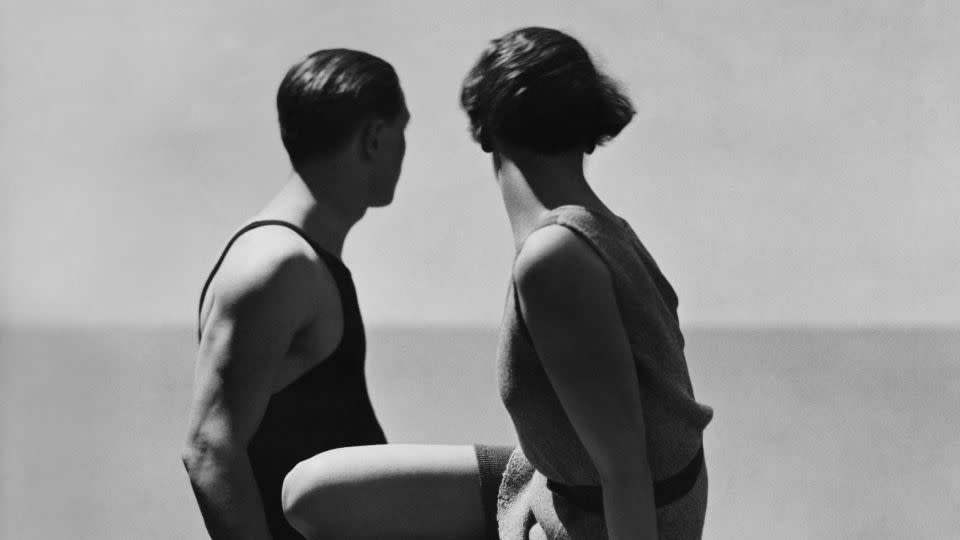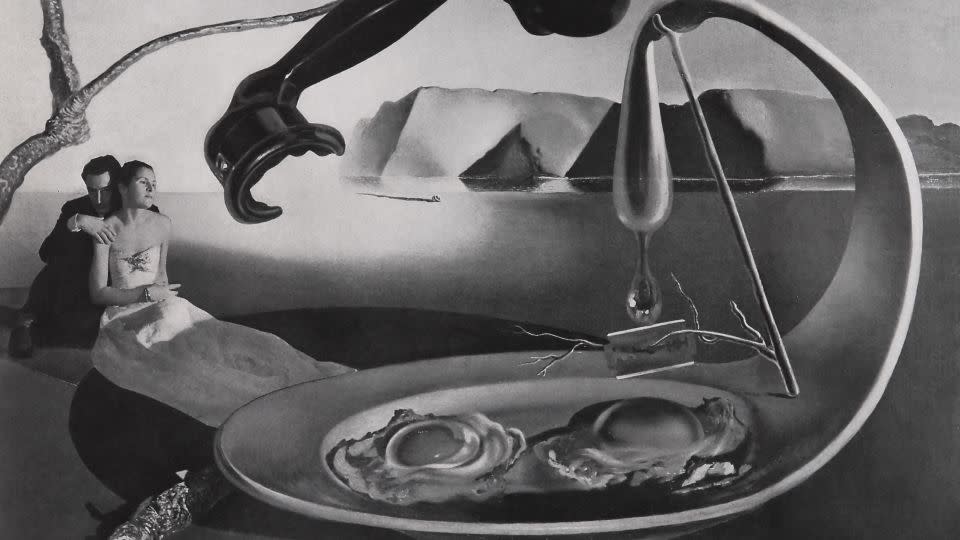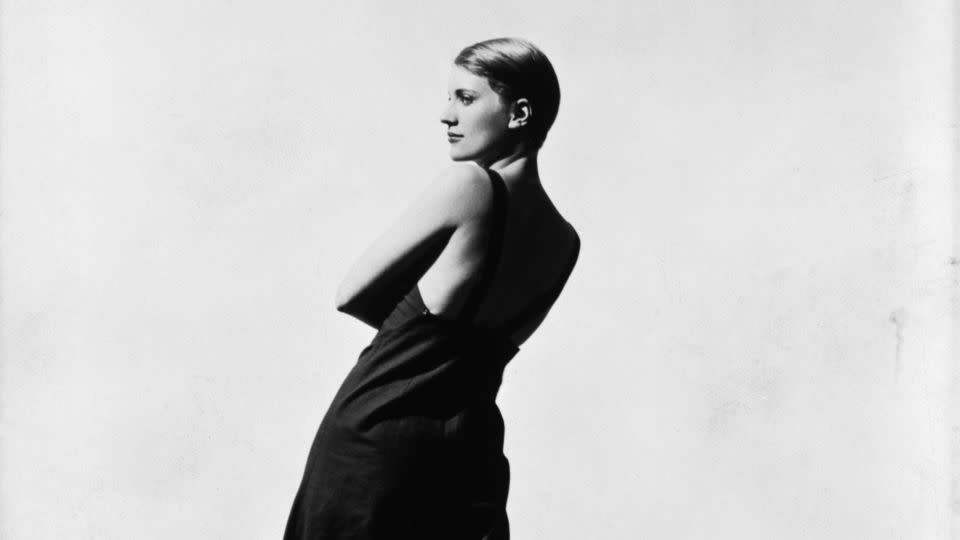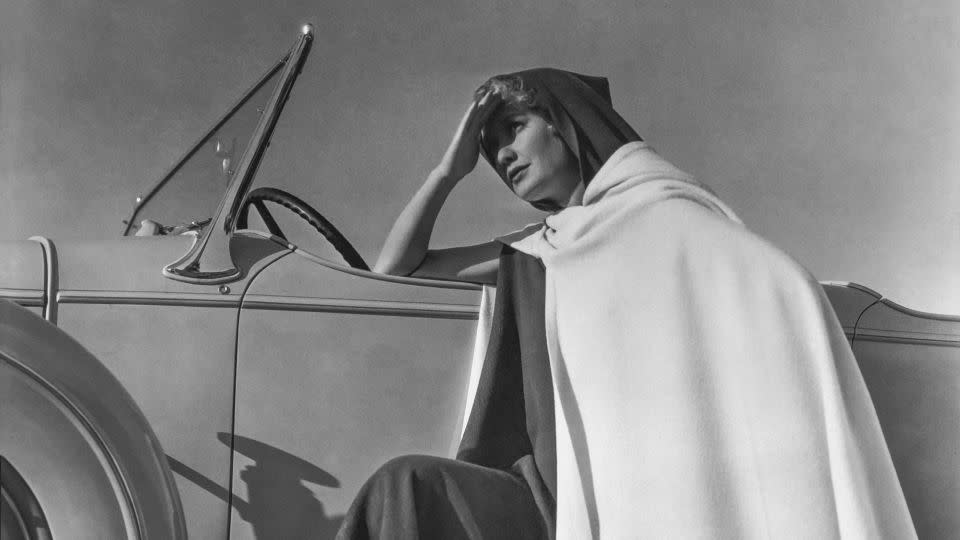The man who captured the jazz age on film
In 1930 George Hoyningen-Huene pulled off one of the greatest dupes in the history of photography. Taking his large-format camera up onto the roof of the Vogue studio on the Champs-Élysées in Paris, he framed his lover Horst P. Horst and a young wannabe photographer named Lee Miller as if the pair were lazing on a diving board on the Cote d’Azur. “Divers” would become his most iconic image: a quiet Riviera moment created high above the honk and fumes of Parisian traffic.
Huene, the Russian aristocrat turned bohemian shutterbug, was a major figure in the cultural fizz of Paris and New York during the 1920s and 1930s but, having died in 1968 before the fine art market for modern photographs, is today a rather forgotten figure. Yet his shots for Vogue, Vanity Fair and Harper’s Bazaar brought a singular sensibility — the classical given a modern twist — to the fashion pages and portrait studio.

“Divers” appears in a new selling exhibition at Jaeger Art in Berlin, “George Hoyningen-Huene: Glamour & Style,” which emphasizes the artist’s opulent portraits of cultural figures from the inter-war years, such as Katherine Hepburn and Josephine Baker as well as Lee Miller, and fashion shots with the luster of Hollywood stills. The show includes platinum palladium prints, some in a special large format, as well as rare vintage silver gelatin photographs that are not for sale. Benjamin Jaeger, who runs the gallery with his wife Steffi, said they aim “to get this sleeping beauty out of the box and bring him to the position to which he belongs.”
Huene was born in St Petersburg in 1900. His father, Baron Barthold Theodor Hermann von Hoyningen-Huene was the chief assistant to Tsar Nicholas II and had a temper as short as his name was long. In his unpublished memoirs quoted in a new book on the artist by Susannah Brown, George recalled a childhood marked by “incredible emotional tension.”

Exiled due to the Russian Revolution, as a young man Huene bounced between England and the South of France before settling in Paris, where he soon found his rhythm as a photographer for Vogue. “Antiquity celebrated its arrival on Montmartre to the sounds of a jazz band,” he wrote in his journal, echoing his signature style of presenting modern models as classical beauties: Johnny Weissmuller props up a Parisian swimming pool as sturdy as a Parthenon pillar; a close-cropped model lies horizontal like an excavated Roman bust.
In Paris he also found love with Horst, another aspiring photographer. They were a curious couple. Horst was a bon vivant, Huene a puritanical aesthete. As Horst later noted, Huene “exercised vigorously, seldom drank, never ate to excess, and kept early hours.” The romance didn’t last but they remained close friends for the rest of George’s life.
People know his images but not the name
The exhibition at Jaeger Art is a collaboration between the gallery and the Swedish entrepreneur Tommy Rönngren who bought the George Hoyningen-Huene Estate from Horst’s son in 2021. It became a passion project for him and his wife Asa. Tommy “stumbled across” the photographer’s work in a group exhibition at Fotografiska, the museum he helped to found in Stockholm. “I thought he was fascinating,” said Rönngren. “People knew his images, but they didn’t recognize the name.”

Rönngren said Huene was “like Forrest Gump. He was popping up everywhere through history, in every important aspect. And he was a part of it, he was not just taking a picture.” Huene had a picaresque life that included periods spent as a translator, railway inspector, film extra, a sergeant in the British Army and a flexible disciple of Joseph Pilates (he provided the photographs for one of the exercise guru’s books). In later life Huene worked in Hollywood, where he befriended Ava Gardner, Sophia Loren and the director George Cukor.
While Huene’s compositions were soft and shimmering, his character had an edge. He was reputed to have thrown a plate of pasta in the face of his employer at Condé Nast. Cole Porter called him “sauvage, revolté, impossible”. But he was a natural with women. He acted as a mentor to Lee Miller in her fledgling career and, as discovered in archived letters, Greta Garbo and Marlene Dietrich opened up to him. They would fight over the same boyfriend, Rönngren chuckled. “Suddenly Dietrich wins. And then she says to Garbo: ‘Now you can have him.’”

All this gossip and glamour would, of course, make great television: and Rönngren is now working on a Netflix drama about the photographer’s life and times. More than half a century after his death, Huene is on the cusp of a renaissance. The Jaeger exhibition, which presents works, dating from 1927 to 1955, coincides with the publication of “George Hoyningen-Huene: Photography, Fashion, Film” by Susanna Brown (Thames & Hudson). And another showcase of his work opens at Chanel Nexus Hall in Tokyo on 7 February.
Benjamin Jaeger believes Huene’s pictures are prescient in their depiction of homosexuality and race and pointed to two pictures of the black singer and dancer Josephine Baker. “Ninety-nine years ago, she came to Berlin. She was a superstar in Europe, then she was banned from Germany in the 1930s because of the Nazis.” Huene’s pictures of Baker can also be seen at a new exhibition on the performer at the Neue Nationalgalerie in Berlin. And, he added, a spiritualist-themed picture of Lee Miller looking into a crystall ball which was taken between the wars feels like a picture for our times.

But Huene’s genius was for shaping male and female beauty into combinations of the ancient and avant-garde. In 1932 he pictured Horst naked astride a marble horse, flesh and stone and a carefully placed towel seamlessly blended by his lighting. And, in another striking portrait on view at Jaeger Art, the Swedish model and dancer Lisa Fonssagrives is shown reclining on a chaise longue, as elegant as an Egyptian princess (the model’s husband Irving Penn coveted the shot). Huene played with identities. “What I like about these pictures from 100 years ago is that they repeat the same situations we now talk about,” said Jaeger. “They can teach a lot. Not just about elegance, glamour, and style but about society.”
“George Hoyningen-Huene: Glamour & Style” is on at Jaeger Art until 23 March
For more CNN news and newsletters create an account at CNN.com
